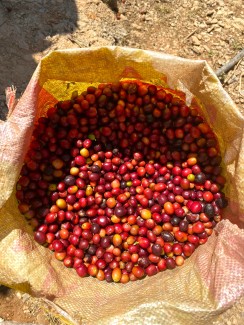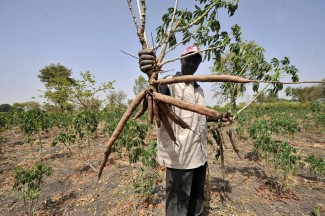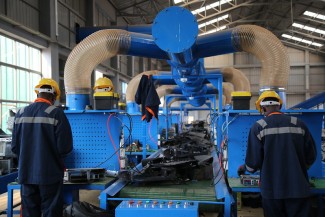Climate change is one of the major threats to our societies, ecosystems and economies. Increasingly complex social and political challenges will arise as populations are forced to migrate from areas affected by climate change, such as through rising sea levels or droughts. A billion people who currently live no more than ten metres above sea level will be impacted. Human health is also expected to deteriorate since climate change affects the social and environmental determinants of health, such as clean air and water, and secure food and shelter. Vulnerable populations in developing countries, particularly least developed countries (LDCs) and Small Island Developing States (SIDS), will be the most severely hit. UNICEF reports that devastating floods have hit at least 27.7 million children in 27 countries around the world, with the number of children affected by flooding in Chad, Gambia, Pakistan and north-eastern Bangladesh being the largest in over 30 years.
Climate change also impacts trade. Extreme weather events can reduce productivity, increase costs and supply chain disruptions in the short term and alter countries' comparative advantages and specialization in long term. The WTO World Trade Report 2022 finds that a rise of 1°C has been found to reduce the annual growth of developing countries' exports by between 2.0 and 5.7 percentage points.
The list of 46 LDCs – home to about 1.1 billion people – is responsible for less than 1% of historical anthropogenic greenhouse gas emissions. While LDCs have the smallest environmental footprints, they are among the most vulnerable to climate change due to their greater exposure to sea-level rise, desertification, fires, floods and droughts. LDCs typically have lower levels of adaptive capacities to overcome such challenges. For most LDCs, climate change has already significantly impacted the lives of people and their long-term prospects of economic development.According to estimates by the World Bank, the effects of climate change will push up to 1.9% of the world population into extreme poverty – most of them concentrated in sub-Saharan Africa and South Asia. Other estimates say that, over the last 50 years, 69% of worldwide deaths caused by climate-related disasters have occurred in LDCs.
Climate change is a multi-sectoral threat for LDCs that poses challenges to agriculture and tourism. Trade infrastructure – such as port facilities, roads, railways, airports and bridges – is dangerously at risk of damage from the consequences of climate change, including rising sea levels and the increased occurrence of extreme weather events. This threatens to further weaken LDCs' ability to trade competitively. And it is not just the physical climatic disruptions that pose challenges to the most vulnerable countries: governments across the world are considering various mitigation strategies, policies and other measures to combat climate change. Yet, such measures, if not well designed, could additionally hinder LDCs' trade competitiveness.
Responding to the growing climate crisis effectively and building resilience is – together with climate change mitigation – a critical sustainable development strategy. Trade coupled with efficient trade policies can support the sustainability and the resilience of supply chains and ensure climate adaptation and just transition in several ways.
Trade can support adaptation through economic growth
One of the biggest challenges for LDCs is the lack of finance that can be invested in their climate change strategies. Open trade raises per capita income, thereby boosting public demand for a cleaner environment and directing financial resources towards climate change adaptation. This growth can then boost investment in climate-resilient infrastructure. Economic growth can also help climate change mitigation efforts. A recent report from the World Bank says that investing an average of 1.4% of GDP annually could reduce emissions in developing countries by as much as 70% by 2050 and boost resilience.
Trade can help build economic resilience and facilitate the deployment of climate-friendly solutions
International trade can also help support climate change adaptation by facilitating access to the best, most efficient and environmentally effective solutions. For instance, trade in services such as weather forecasting, telecommunication and transportation can play a key role in preparing businesses and populations for climate shocks. Lowering tariffs and eliminating trade barriers to climate solutions such as stress-tolerant cultivars, early warning systems, irrigation technology and technical services will increase their affordability and dissemination. The use of harmonized and environmentally coherent standards will enable the development of and access to such goods and services needed for countries' climate change adaptation strategies. The participation of LDCs in standards development should be facilitated, as they are usually the ones facing the most difficulties in complying with international standards due to a lack of infrastructure and human and financial capacity.
Trade can contribute to improving food security
Agriculture and the global food system will also be threatened by climate change in the years ahead with important implications for jobs and food security. New technologies can certainly help tackle the climate-related challenges that producers face. An analysis of household surveys in Ethiopia and Rwanda finds that the use of improved seeds, fertilizer and insecticide, protection against erosion, irrigation, and access to finance can mitigate crop damage. For example, farmers can make use of crop varieties that are more resistant to diverse climate conditions. Governments can help progress in this area by accelerating research and development in engineering improved seeds, which will help farmers boost productivity sustainably while building resilience.
Trade plays an essential role in determining the production, availability, price and quality of food. It can mitigate food insecurity induced by climate shocks by easing the movement of essential goods between surplus and deficit economies. At the same time, international trade helps create jobs and raise incomes, which strengthens households' resilience and increases their ability to buy food.
Trade drives innovation and more environmentally sustainable production and consumption models
The new climate economy comes with opportunities such as the development of new production and consumption models that can reduce our carbon and environmental footprint. An example of this is the circular economy models: by improving resource efficiency and reducing waste, the circular economy can make a significant contribution to climate change mitigation and reduce the pressure on using new natural resources. At the same time, many parts of the circular economy value chain are powered by services that can represent opportunities for economic diversification for developing countries and LDCs. In addition, as countries transition to low carbon economies, they increasingly explore sustainable substitutes and alternatives to products, such as the use of natural fibres as a substitute for plastics, which can open new trade and economic opportunities for LDCs.
International trade cooperation and policy dialogue can support climate action
The WTO is a global forum for trade cooperation that can enhance the predictability of trade measures related to climate change. Through policy dialogue across its committees and bodies, the WTO can improve the collective understanding of how trade interacts with climate adaptation and mitigation strategies.
The three WTO environmental initiatives – the Trade and Environmental Sustainability Structured Discussions (TESSD), the Dialogue on Plastic Pollution and Environmentally Sustainable Plastic Trade (DDP) and the Fossil Fuel Subsidy Reform (FFSR) – can further support policy dialogue and international cooperation. All three initiatives give a particular focus on the needs of developing countries, particularly LDCs, in the context of these pressing 21st-century environmental challenges. They exemplify the recognition that trade and the WTO have a role to play in addressing climate change. TESSD's work this year has prioritized several issues including trade-related climate measures and environmental goods and services where efforts are supported by dedicated working groups.
The multilateral trading system promotes the use of international standards, good regulatory practices and international regulatory cooperation to enhance transparency and build trust among regulators regarding climate-related measures. Such cooperation facilitates trade and market access to emerging new green technologies and services.
Conclusion
LDCs need support to tackle the climate crisis to safeguard and further advance the hard-earned improvements in incomes, education and health achieved over the past decades. To successfully mitigate and adapt to climate change, LDCs have to address several challenges and strengthen their policy frameworks. Not only do they need to enhance the climate-resilience of their trade-related infrastructure but also to improve their digital connectivity. The latter will play a key role in addressing information asymmetries and broadening the reach of early warning systems.
International trade cooperation can help materialize just transition and prosperity for all by enhancing the mutual understanding of challenges and opportunities, limiting protectionist policies, and expanding trust to ensure that green technologies and services flow as smoothly and freely as possible. The WTO Aid for Trade Initiative has an important role to play by mobilizing funding for critical supply-side infrastructure for LDCs necessary for the transition to a low-carbon economy and supporting the private sector to adapt to climate change. Aid for Trade needs to be better targeted to address development concerns in line with LDCs' nationally determined contributions (NDCs).
If you would like to reuse any material published here, please let us know by sending an email to EIF Communications: eifcommunications@wto.org.



